Ray Tracing
Ray tracing is probably the best known technique for rendering
photorealistic images.
Ray tracing is particularly good at simulating sharp shadows,
mirrors and glass while other effects such as caustics and colour
bleeding are neglected.
An advantage of ray tracing based rendering approaches compared to
radiosity is that they handle procedural models and complex objects
that do not need tessellation.
See the Cornell box images for a comparison
between ray tracing and global illumination. See my book to find out how to add global
illumination and caustics to a ray tracer :)
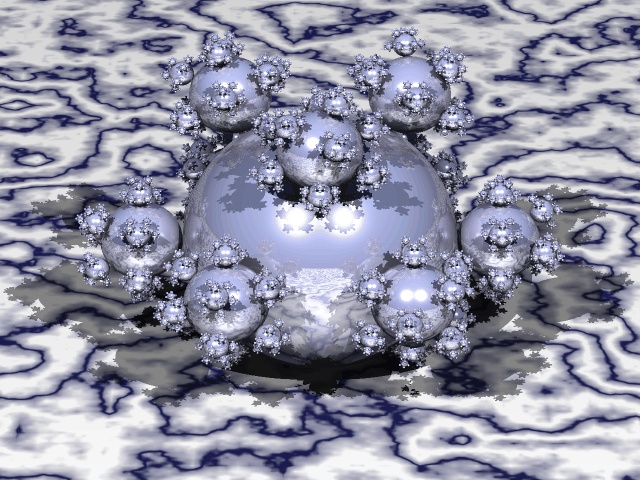
|
The sphereflake was introduced (I believe) by Eric Haines in his
database SPD for testing the speed of ray tracing software. This
particular sphereflake is one my early ray traced images (1992). It is
a procedural (fractal object). Here approximated using 500.000 spheres.
Even though it is old I still like it :)
|
|
A dragon made of frosted glass
|

|
This is a rendering of the dragon model using a microfacet model for
refraction. I derived this model with Josh Wills in the fall of 2003
only to find out that Jos Stam had derived it earlier in his 2001 EGSR
paper. Oh well...
|
|
A ray traced 4D Julia fractal
|

|
This is a 3D ray traced rendering of a 4D Julia fractal (evaluated as
the standard 2D version except this one uses 4D quaternions).
|

|
This fractal egg is an example of a hypertexture as introduced by Perlin
and Hoffert in 1989. The egg is a simple implicit surface defining a
density in world space. By subtracting a turbulence function from this
density we get a fractal egg.
|

|
The fireball is another example of a hypertexture.
Here the implicitly defined sphere specifies density as well as
emission. Both of these are changed using a modified turbulence function.
|
|
Sweeping a sphere through space
|
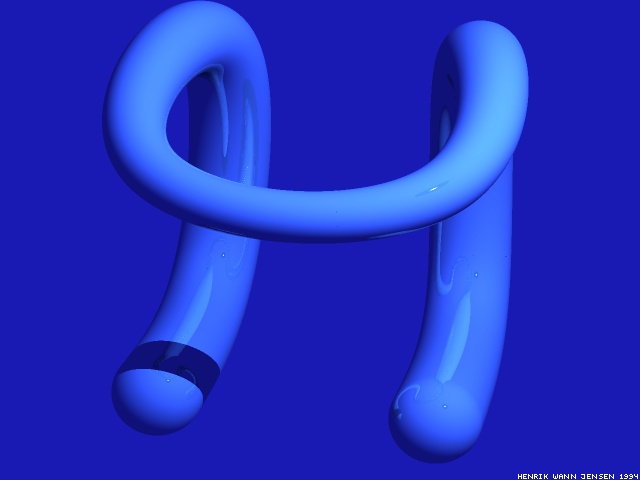
|
This model was created by sweeping a sphere through space along the
trajectory of a spline. 8 spheres with different radi placed at the
corners of a cube were used to construct the spline curve.
|
|
Sweeping a sphere through space
|

|
One of my first ray tracing images (1990-1991).
Rendered first time on an Amiga in HAM mode (the good old days).
|
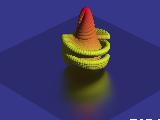
|
The Steinbach Screw reflected into a glossy mirror.
|
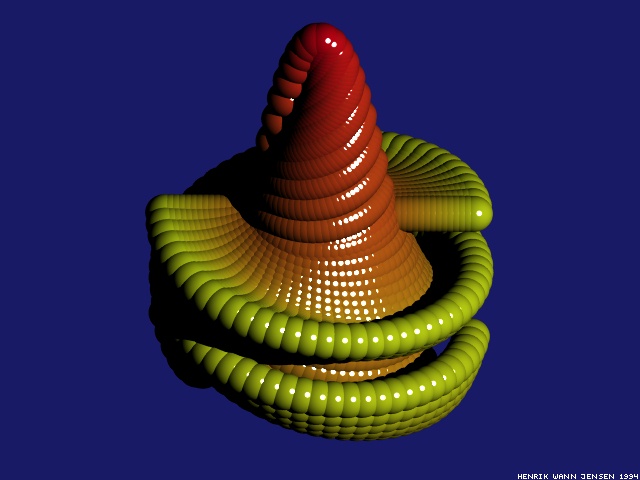
|
The Steinbach Screw is a mathematical function sampled using coloured spheres.
|

|
The Tetraoid.
|
|
The ancient village of Lejre
|
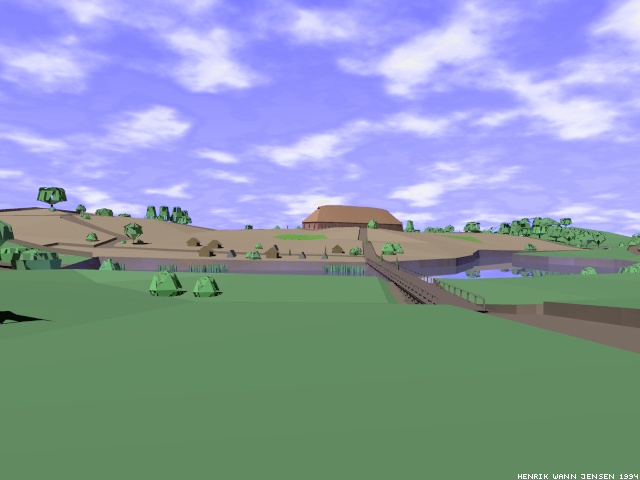
|
This is a model of lejre (an ancient Danish viking village) created
in AutoCAD by Flemming Vestergaard and Hans Peter Nielsen.
The model is made of 29000 triangles. Each tree is made of
10 triangles which of course significantly limits the obtained realism.
|
Last update: May, 2007
Henrik










